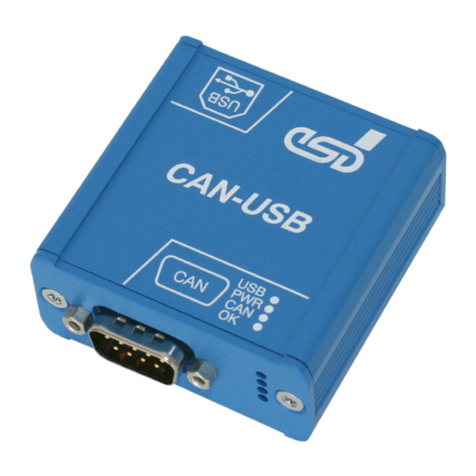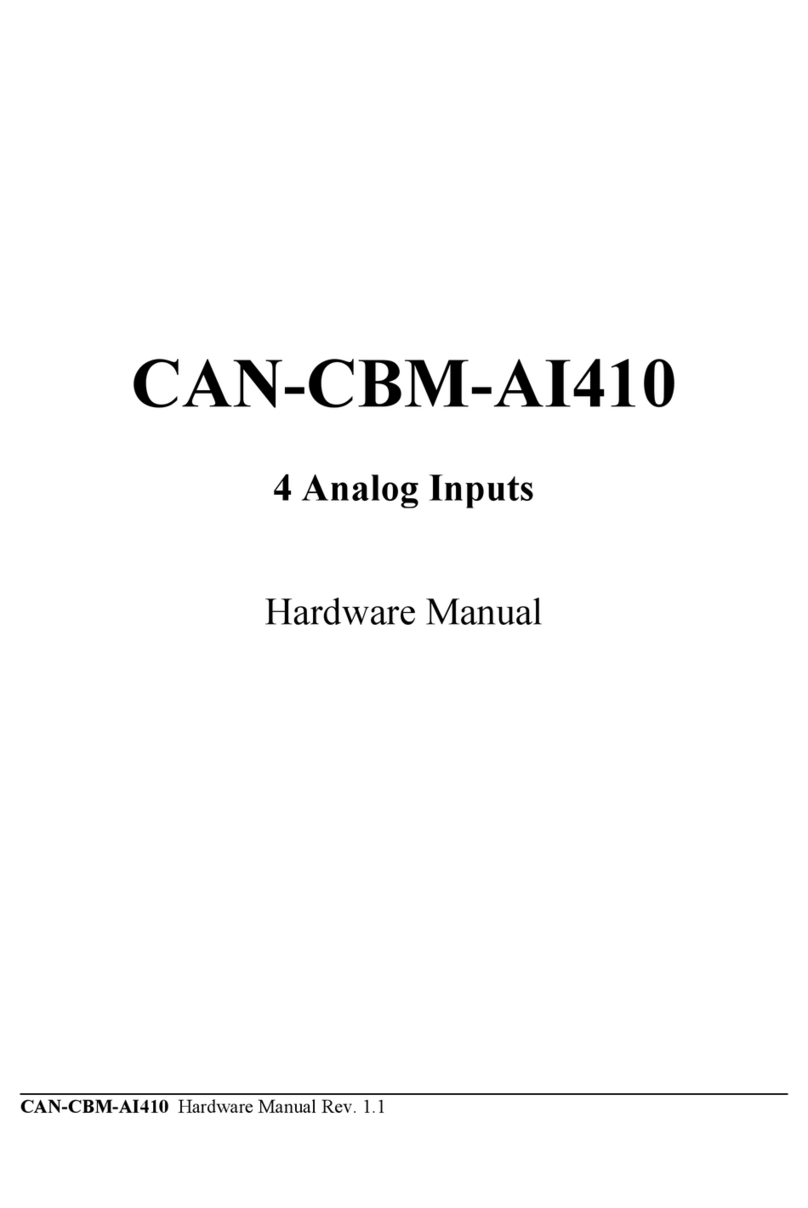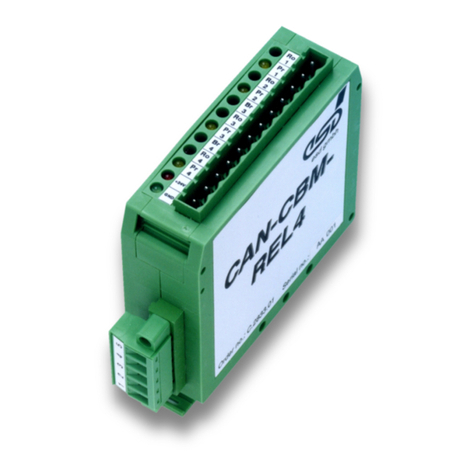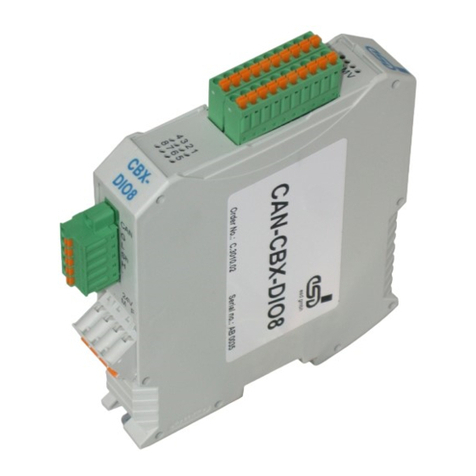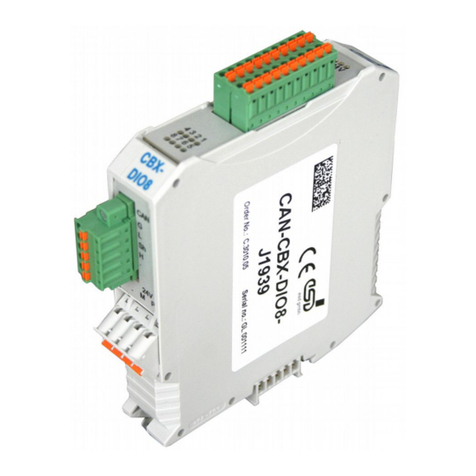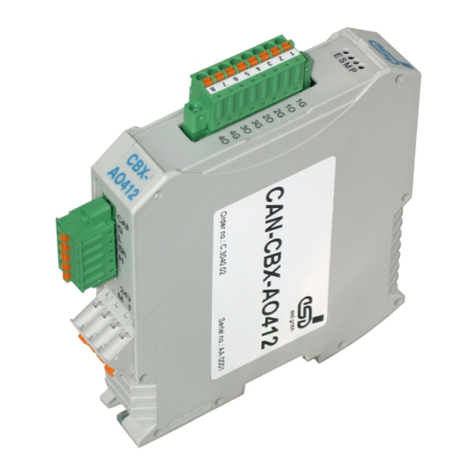
Manual • Doc.-No.: C.3032.21 / Rev. 1.1
CAN-CBX_Pt100Page 6 of 120
6.3.2DeviceCabling ......................................................38
6.3.3Termination ........................................................38
6.4ElectricalGrounding.......................................................39
6.5BusLength ..............................................................39
6.6ExamplesforCANCables ..................................................40
6.6.1 Cable for Light Industrial Environment Applications (Two-Wire) . . . . . . . . . . . . . . 40
6.6.2 Cable for Heavy Industrial Environment Applications (Four-Wire) . . . . . . . . . . . . . 40
7. CAN Troubleshooting Guide ..................................................41
7.1Termination .............................................................41
7.2ElectricalGrounding ......................................................42
7.3ShortCircuitinCANWiring ................................................42
7.4CAN_H/CAN_LVoltage ...................................................42
7.5CANTransceiverResistanceTest ............................................43
7.6Supportbyesd............................................................43
8. CANopen Firmware .........................................................44
8.1 Definition of Terms . 44
8.2NMT-Boot-up ............................................................45
8.3TheCANopen-ObjectDirectory..............................................45
8.4 Communication Parameters of the PDOs . . . . . . . . . . . . . . . . . . . . . . . . . . . . . . . . . . . . . . . 46
8.4.1 Access on the Object Directory . . . . . . . . . . . . . . . . . . . . . . . . . . . . . . . . . . . . . . . . . 46
8.5 Overview of used CANopen-Identifiers . . . . . . . . . . . . . . . . . . . . . . . . . . . . . . . . . . . . . . . . 49
8.5.1SettingtheCOB-ID ..................................................49
8.6DefaultPDO-Assignment ...................................................50
8.7ReadingtheAnalogValues..................................................51
8.7.1MessagesoftheAnalogInputs..........................................51
8.7.2 Supported Transmission Types Based on DS-301 . . . . . . . . . . . . . . . . . . . . . . . . . . . 51
8.8CommunicationProfileArea ................................................52
8.8.1UsedNamesandAbbreviations .........................................52
8.9ImplementedCANopen-Objects..............................................53
8.9.1 Overview of used 1000-Objects and Default Values . . . . . . . . . . . . . . . . . . . . . . . . . 53
8.9.2 Device Type (1000
h
)..................................................55
8.9.3 Error Register (1001
h
).................................................56
8.9.4 Pre-defined Error Field (1003
h
) .........................................57
8.9.5 COB-ID of SYNC-Message (1005
h
)......................................59
8.9.6 Communication Cycle Period (1006
h
) ....................................60
8.9.7 Manufacturer Device Name (1008
h
)......................................61
8.9.8 Manufacturer Hardware Version (1009
h
) ..................................62
8.9.9 Manufacturer Software Version (100A
h
) ..................................62
8.9.10 Guard Time (100C
h
) und Life Time Factor (100D
h
) ........................63
8.9.11 Node Guarding Identifier (100E
h
).......................................64
8.9.12 Store Parameters (1010
h
) .............................................65
8.9.13 Restore Default Parameters (1011
h
) .....................................67
8.9.14 COB_ID Emergency Message (1014
h
)...................................69
8.9.15 Inhibit Time EMCY (1015
h
)...........................................70
8.9.16 Consumer Heartbeat Time (1016
h
)......................................71
8.9.17 Producer Heartbeat Time (1017
h
).......................................73
8.9.18 Identity Object (1018
h
) ...............................................74
8.9.19 Synchronous Counter Overflow Value (1019
h
) ............................76
8.9.20 Verify Configuration (1020
h
) ..........................................77
8.9.21 Error Behaviour Object (1029
h
) ........................................78
8.9.22 NMT Startup (1F80
h
) ................................................79












